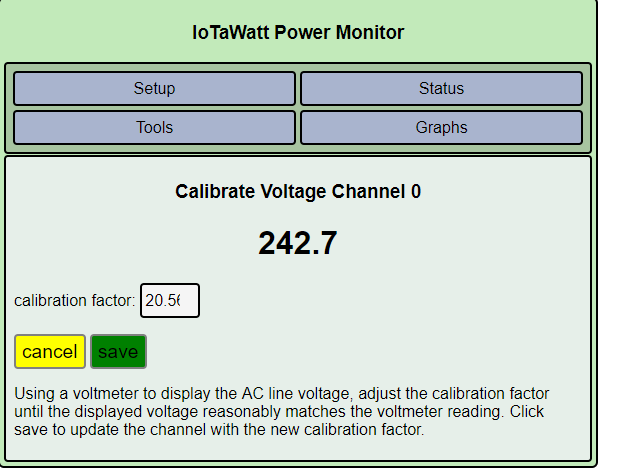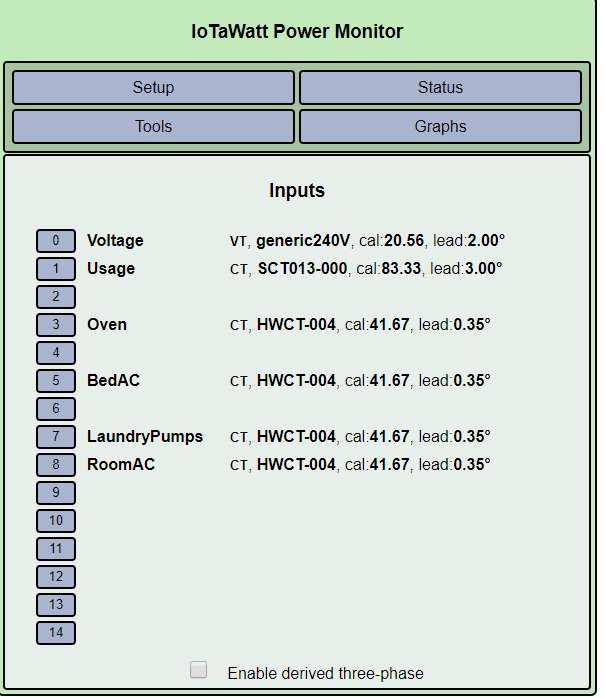The phase correction is indicated by the " phase lead 2.00º ". That’s a phase correction of +2.00º. That’s a pretty good estimate and probably will give you satisfactory results.
I see that you are using some HWCT-004 CTs. Those are solid core CTs with very low phase shift of +0.35º. You may be able to use the CT on input 3 to directly calibrate your VT if it is truly just a resistance oven (not a microwave or convection).
To do so.
-
Turn on the oven and see if the PF reading is 1.00. You might see .99 if the VT is really not close to 2.0º.
-
Use the browser url: iotawatt.local/command?vtphase=3 to obtain a measure of the relative phase difference between CT3 and VT0. You should get a low negative number. Do this several times to insure there are no sampling errors.
-
Subtract the resulting phase difference from the phase correction of the CT (+0.35) to get the phase shift of the VT.
So for instance if the measurement was -1.82º, the math would be 0.35 - (-1.82) = 2.17º.
As advised by @Giraffe above, change the VT to the simple generic where you can enter the phase shift and specify your already determined calibration of 20.56, along with a phase of 2.17:

This would be a good exercise on your system because the phase corrections used by IoTaWatt were determined at 60Hz, and they are different at 50Hz. For most users with CTs in the 2º-3º range, with a VT in the same general range, the difference is pretty much a wash, but when you use the lower shift solid core CTs, the relative differences are greater, so calibrating phase is a good idea for your setup.
Taking you through it on a bench system here:

I’m going to use input 2, a solid core ECOL09-20 because the HWCT is backwards and that’s a little more complicated. I’m using some light bulbs for a resistive load:

Now I run the phase measurement command and get:
Sample phase lead
Channel: 2
Refchan: 0
Measured shift: 31.88 degrees
Artificial shift: 33.59 degrees (60) samples
Net shift: -1.71 degrees
So if I subtract that from the ECL09-20 configured shift of 0.30 - (-1.71) = 2.01º.
That pretty close to the 1.95º that was the independently measured phase lead of my VT (measured against an unshifted AC line input). Note that when IoTaWatt does the vtphase measurement, there are no corrections applied. It is the raw phase difference between the two input signals. There is also a 0.06º sampling shift that IoTaWatt corrects for all measurements. That probably is the cause of the slight variation in our results.
So there you have it. Field phase calibration.
![]()




